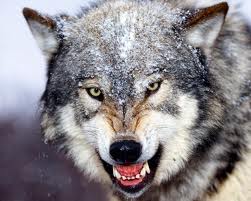Dog Years. We all know the expression, most of us know the maths – 1 human year = 7 dog years (roughly). When you put it into a different context and say; ‘for every day you live, your dog has lived the equivalent of a full human week’ it’s quite a frightening thought. Especially when you consider how much can happen in your life and with your health over the course of a week. Never fear, we’ve come up with 50 great hints and tips to keep your dog in top-shape and hopefully keep their tails wagging deep into old age…
How To Extend Your Dog’s Life: 50 Tips to Help Your Dog Live Longer
1. Feeding raw, fresh foods on occasion can really invigorate your dog’s diet. Commercial pet foods have come along way but, like us, dogs benefit and thrive on variety.
2. Believe it or not, all supplied pet food should be fit for human consumption therefore you should look out for food which may contain unwanted by-products. By-products include intestines, which carry diseases.
3. Garlic occasionally given in your dog’s diet can improve heart condition and has some other healthy side-effects. Don’t be fooled into thinking this herb is a cure-all though. Garlic does have some very beneficial effects on health but, contrary to some opinion, it will not remove worms if your dog is infected. Instead, go to your vet and he or she will more than likely supply you with a pharmaceutical solution, which will clear your dog of worms.
4. Valerian Root is wonderful for animals that are stressed or hyperactive. This herb is naturally found in pastures and animals love it.
5. Tooth decay and diseased gums produce bacteria that get into the animal’s bloodstream. It can result in problems to any of their organs but in particular, the valves in the animal’s heart can be damaged. Kidneys are also very vulnerable and this could be one of the major killers of older dogs. Don’t use human toothpaste but entice your pet with the beef or chicken flavoured varies because you need to keep your dog’s teeth clean for more reasons than ‘the dog-breath issue’
6. I would never have thought of applying sunscreen to a dog, but pale or white dogs are very susceptible to skin cancer. A quick smear of sunscreen on the vulnerable areas; tips of ears and nose, could be a very simple way of saving your animal’s life.
7. The health of a dog is based on a lot of factors including genetics, exercise, and regular checkups, to name a few. But the number one factor affecting the health of a dog is the kind of food that it consumes. There are many types of commercial dog foods and diets on the market today, from BARF (bones and raw food), to steam-extruded products. Get to know your pet food labels, read the label and avoid products with chemicals and unnatural additives. You will likely avoid allergic reactions and skin problems in your dog.
8. Health begins in the kitchen. I believe the single most important thing you can do, after loving them, is to feed your companion animals fresh, wholesome, human grade, preservative free foods daily. Feeding companion animals an all natural diet will, most certainly, improve their overall health and increase their longevity.
9. Dogs like to play all types of games and have loads of energy to burn off. It’s important though that your dog learns to calm down and “chill out” as much as how to burn off energy. Otherwise they get stressed with the constant anticipation and over excitement. So, teach your dog the equivalent to sitting down and having a cup of tea by putting a command on quiet and relaxing times.
10. A fit dog lives longer. Obesity amongst pet dogs is a growing problem. If a dog is overweight it puts extra strain on various parts of the body and may well shorten the dog’s life.









